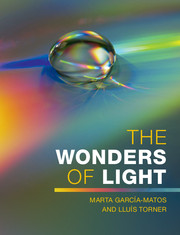CONNECTED
Published online by Cambridge University Press: 05 July 2015
Summary
August in a small Mediterranean village. Too hot to leave the shade of the vines and fig trees in the courtyard, the day goes by reading, chewing fruits, playing cards. Two hours after sunset, it's time to leave for the fields and listen to the crickets. A remote memory from childhood appears: somebody's grandfather is explaining a story, an old rural formula to judge the air's temperature from the frequency of the crickets’ song. A sudden jolt of restlessness. Could that be true? Oh, never mind. We're lost, on holidays, in the middle of nowhere; sitting over subterranean water streams, among soft hills, under the stars. Only time comes along. Over three hours, according to the smartphone, which besides such information displays several apps to measure the air's temperature from the crickets' song. Apparently, the phone did not forget about that brief inquisitive moment a few hours ago. It's the first event of the day that happens fast.
Connected and immediate. The sign of our times involves an overwhelming flow of information from long-distance sources, primarily supported by optical fiber technology. A large part of the flow of information started leaving the saturated radio and microwave frequencies years ago. Almost all long-haul telephony and data communication today is efficiently packed into near-infrared light travelling on glass fibers. But, why light?
The very basic principle is simple. The frequency of the electromagnetic waves in the optical range is much higher than that of radio and microwaves, meaning that in a second there are more wave peaks to modulate for the encoding of information. Therefore, more ones and zeros – the alphabet of digital information – can be packed in less time.
Notwithstanding how simple the basic principle might seem, its practical implementation for the accurate transmission of information over long distances represents a serious challenge.
Alexander Graham Bell managed to send voice and other sounds encoded in a beam of sunlight. He called his invention the photophone. Until his death, he considered the prospects of the photophone to be more promising even than those of the telephone. And he has been proved right.
- Type
- Chapter
- Information
- The Wonders of Light , pp. 73 - 80Publisher: Cambridge University PressPrint publication year: 2015

